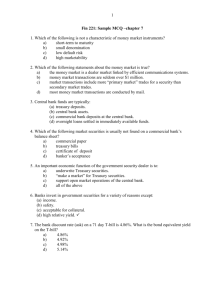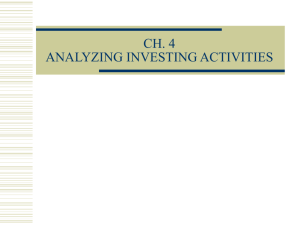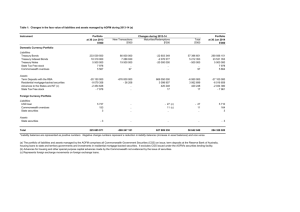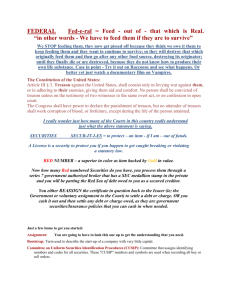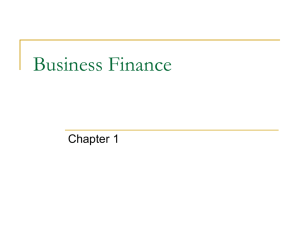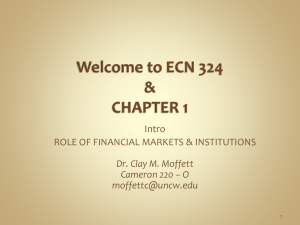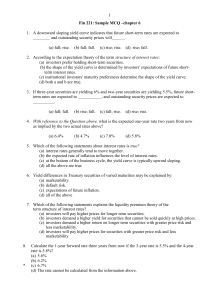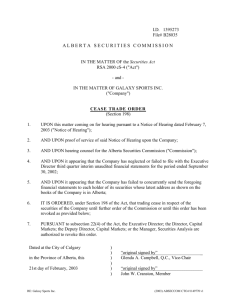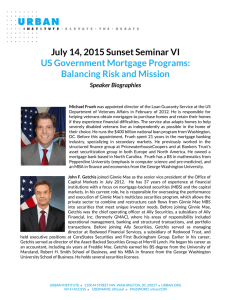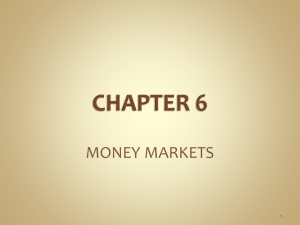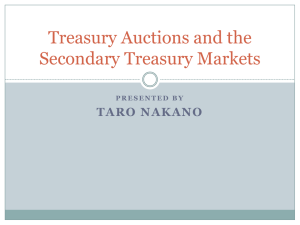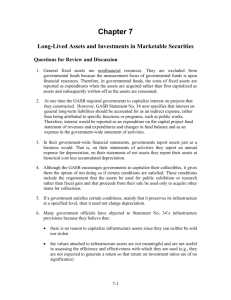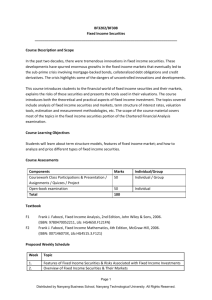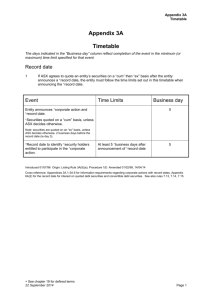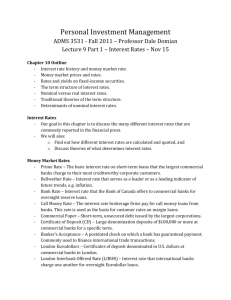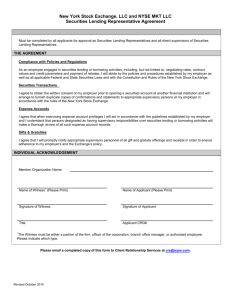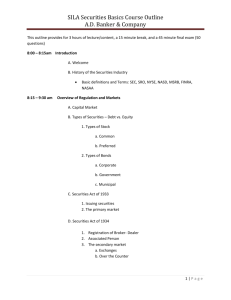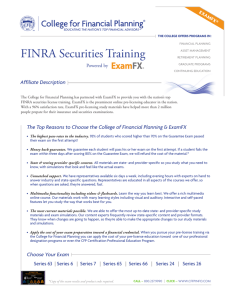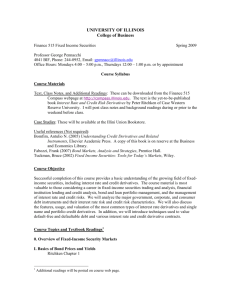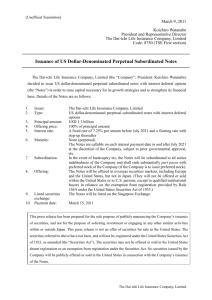Chapter 1: The Financial Environment Multiple Choice 1. is the study
advertisement
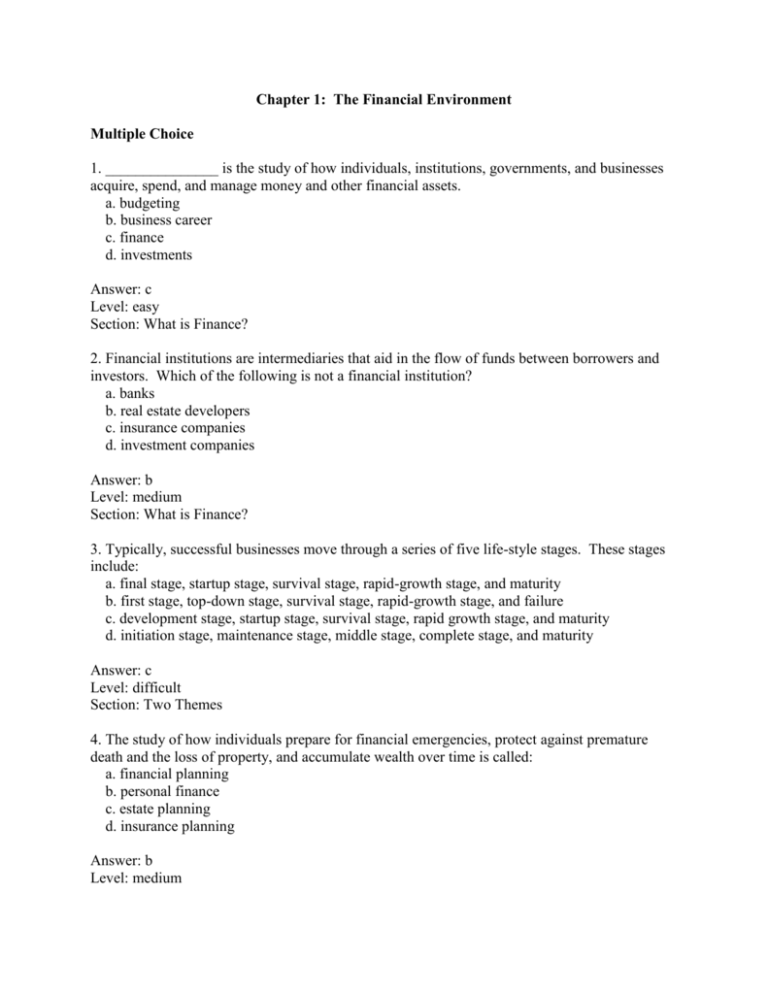
Chapter 1: The Financial Environment Multiple Choice 1. _______________ is the study of how individuals, institutions, governments, and businesses acquire, spend, and manage money and other financial assets. a. budgeting b. business career c. finance d. investments Answer: c Level: easy Section: What is Finance? 2. Financial institutions are intermediaries that aid in the flow of funds between borrowers and investors. Which of the following is not a financial institution? a. banks b. real estate developers c. insurance companies d. investment companies Answer: b Level: medium Section: What is Finance? 3. Typically, successful businesses move through a series of five life-style stages. These stages include: a. final stage, startup stage, survival stage, rapid-growth stage, and maturity b. first stage, top-down stage, survival stage, rapid-growth stage, and failure c. development stage, startup stage, survival stage, rapid growth stage, and maturity d. initiation stage, maintenance stage, middle stage, complete stage, and maturity Answer: c Level: difficult Section: Two Themes 4. The study of how individuals prepare for financial emergencies, protect against premature death and the loss of property, and accumulate wealth over time is called: a. financial planning b. personal finance c. estate planning d. insurance planning Answer: b Level: medium Section: Two Themes 5. Which of the following career opportunities would a finance major typically not be interested in pursuing after his or her college days? a. credit analyst b. investment research analyst c. management consultant d. stockbroker Answer: c Level: medium Section: Careers in Finance 6. Finance is founded on _____ principles. a. one b. five c. six d. ten Answer: c Level: easy Section: Six Principles of Finance 7. What does the time value of money principle help individuals to understand? a. the social impact of monetary policy b. the economic behavior of individuals and the businesses they run c. the political oversight that exists in businesses today. d. the economic development policies in the United States. Answer: b Level: difficult Section: The Time Value of Money 8. Risk is the __________ about the outcome or payoff of an investment in the future. a. guarantee b. obligation c. uncertainty d. promise Answer: c Level: difficult Section: Risk versus Returns 9. How much return is expected for taking on more risk? a. lower b. equal c. zero d. higher Answer: d Level: medium Section: Diversification of Risk 10. A financial market is said to be ___________ if the pieces of securities reflect all information that is available to the public. a. more efficient b. energy efficient c. information efficient d. less efficient Answer: c Level: difficult Section: Financial Markets are Efficient 11. How can you bring a manager’s objectives in line with the owner’s objective at a firm? a. The objectives are always equal. b. Tie the manager’s compensation to performance measures that are beneficial to the owner. c. Tie the owner’s compensation to performance measures that are beneficial to the manager. d. You never tie the manager’s objectives in line with the owner’s objective at a firm. Answer: b Level: difficult Section: Management versus Owner Objectives 12. ______ ______ is how an individual or organization treats others legally, fairly, and honestly. a. Ethical behavior b. Organizational behavior c. Coordinated behavior d. Reflective behavior Answer: a Level: easy Section: Reputation Matters 13. Effective financial systems must have several sets of ______ ______ who pass laws and make decisions related to fiscal and monetary policies. a. financial analysts b. policy makers c. decision makers d. organizational leaders Answer: b Level: difficult Section: Overview of the Financial System 14. What is the name of the market where debt securities with maturities longer than one year and corporate stocks are issued or traded? a. money market b. primary market c. secondary market d. capital market Answer: d Level: difficult Section: Financial Markets Characteristics 15. What is the name of the market where money market securities, bonds, and mortgages are originated and traded? a. debt securities market b. foreign exchange market c. derivative securities market d. equity securities market Answer: a Level: medium Section: Major Types of Financial Markets 16. A ______ is a loan backed by real property in the form of buildings and houses. a. derivative b. mortgage c. security d. brokerage account Answer: b Level: easy Section: Mortgage Markets 17. Why did the United States government pass the Economic Stabilization Act of 2008? a. to allow the U.S. Treasury to sell toxic assets to foreign financial institutions b. to allow the U.S. Treasury to sell toxic assets to financial institutions c. to allow the U.S. Treasury to purchase toxic assets from financial institutions d. to allow the U.S. Treasury to purchase toxic assets from Russis Answer: c Level: difficult Section: The 2007-09 Financial Crisis
